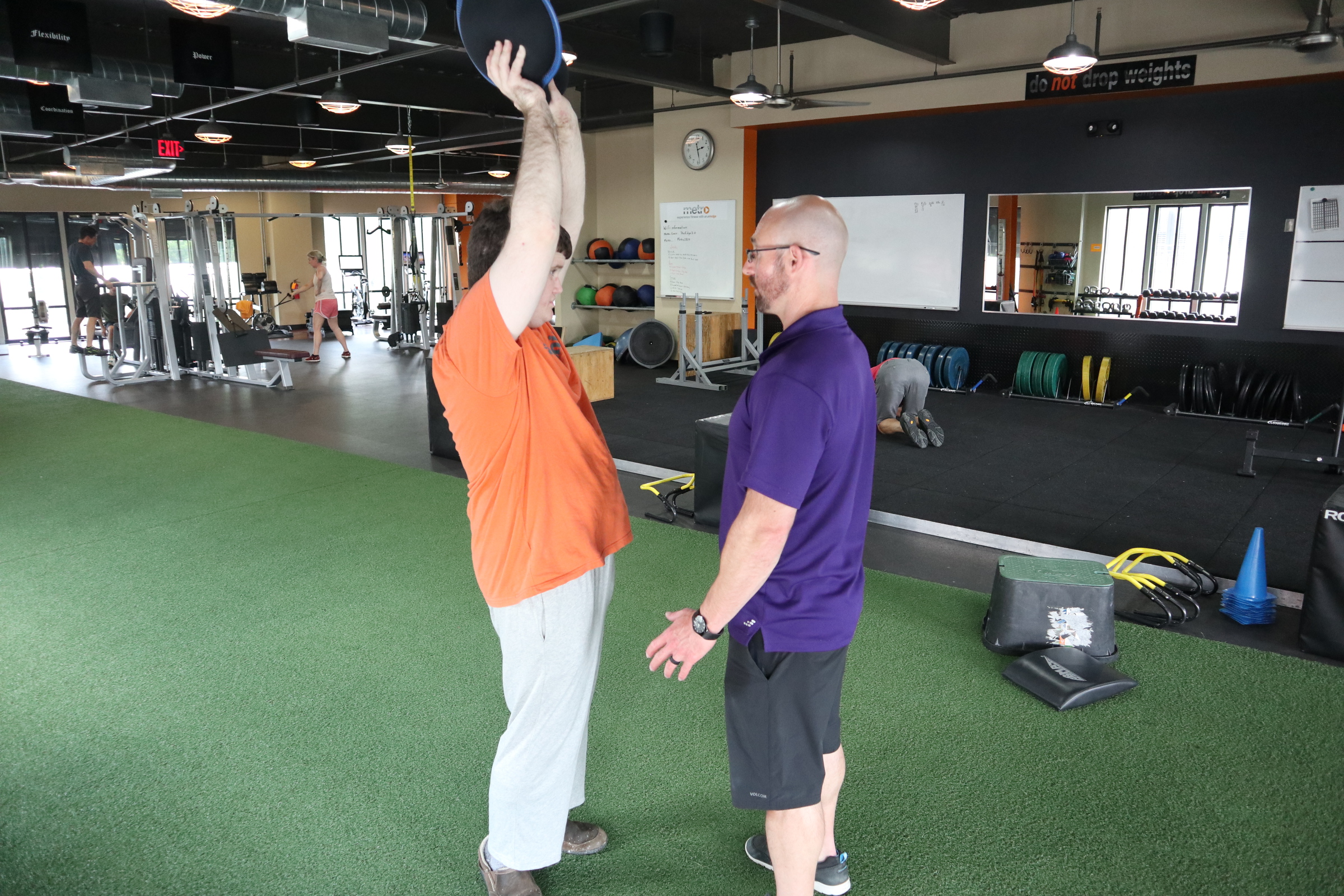The Necessity of Fitness as Preventative Healthcare for Adults with Autism
Do falls and the affects of aging concern you?
For many neurotypical individuals, falls and muscular degeneration as we age can have major implications on independence and quality of life.
Now think of the challenges that already exist for the ASD/Neurodivergent population and consider the question…
“What if we could incorporate strength exercises as preventative training for falls and other accidents?”
When we pose fitness as a life skill, it takes on greater meaning and importance. Strength training is not just looking better or sport-specific performance, but improving critical aspects of physical, emotional, and cognitive functioning for the ASD/ND population of all ages and ability levels.
The unfortunate misunderstandings around the preventative aspects of resistance training for the autism and neurodivergent population have led to both limited expertise and appropriate programming for adults. Not only is there a general ignorance about appropriate and effective fitness training protocols, lax standards of the fitness profession leads to disjointed and often misleading applications and explanations of exercises protocols.
Additionally, programs that do offer fitness for the autistic and neurodivergent population often
- Focus on younger children
- Use ineffective protocols for developing strength, stability, and motor planning
- Do not take into account the behavioral and cognitive needs of each participant
Effective fitness programming for adults with autism should focus, as with neurotypical adults, on developing progressive strength in the major movement patterns; squatting, hinging, pressing, pulling, carrying. While they seem basic, these are the keys to strengthening the body not only in the gym but as both a proactive and preventative life skill.
Older adults with autism, Down Syndrome, and related neurodiversities have a higher potential risk of medical complications than the general population. A major contributing factor is the sedentary lifestyle led by the majority of individuals with ASD. Again, this is a result of multiple issues including lack of prioritization, effective exercise protocols, and low motivation.
Progressive, consistent resistance training for adults with autism can increase and maintain lean body mass and strength. When lean muscle tissue begins to atrophy, risk of falls and other avoidable injuries rises. This raises an ethical dilemma as by restricting access to resistance training, individuals with autism are made more vulnerable to accidents in later life.
Progressive fitness training for the autism and neurodivergent individual refers to beginning with exercise variations that coincide with the current level of strength and mobility. For example, many adults with autism present strength and motor deficits that inhibit healthy squatting patterns. In order to increase strength in a safe, meaningful way, we may start the athlete with a box squat, reducing the range of motion (ROM) so that contraindicated movement (folding or bending at the trunk) are negated.
Particularly for older adults with autism, an understanding of biomechanics and exercise form is essential. Identifying compensatory movement during movement gives the professional an opportunity to modify the exercise. An exercise by itself with limited guidance is typically insufficient. Many adults with ASD struggle with kiesthetic or body awareness and require specific guidance to navigate an exercise.
While “balance” is the skill normally attributed to falls in older adults, the reality is that lack of supportive strength and mobility are the primary culprits. Balance, without sufficient support strength, will not prevent falling and, just as important, is not a component of being able to stand back up.
If independence and safety are considered priorities for adults with autism, strength training must be part not only of the conversation but an essential addition.
Consistent training refers to strength training programs being ongoing for individuals with autism. So how often is “consistent?” A minimum of once a week training is necessary for physical, adaptive, and cognitive progress. In Autism Fitness methodology we use this PAC Profile to assess and address these 3 areas of skill.
Physical: The exercises must be performed often enough, and with sufficient sets and repetitions, to create a training effect. A training effect is where the muscles respond to stimuli by growing stronger.
Adaptive: The behavioral considerations of motivation and engagement. These are often one of the greatest challenges for adults with autism to participate in fitness programs.
Cognitive: The ability to process information/directions and the optimal strategies for coaching each individual. Cognitive functioning also refers to neuromuscular functioning and body awareness.
For older adults with autism and related disorders and/or divergencies, strength-based exercises, while not currently considered as such, is a critical component of physical and emotional health. Progressive resistance training has proactive and preventative benefits that can not be achieved through any other modality including sports.
Understanding best practices and effective exercise protocols is essential, along with prioritizing regular fitness training throughout the week. As with other life skills, understanding individual skills and developing sound programming will lead to the most beneficial outcomes.
